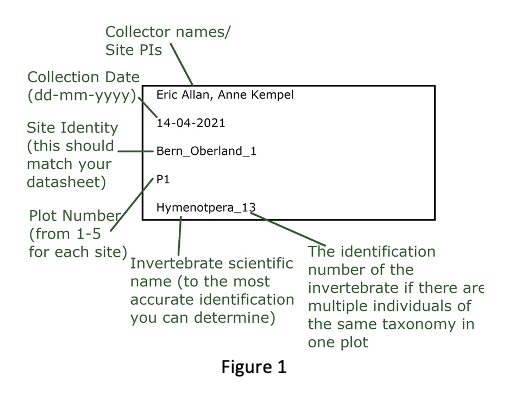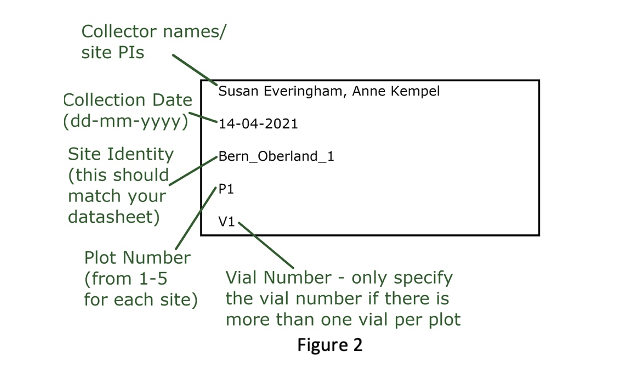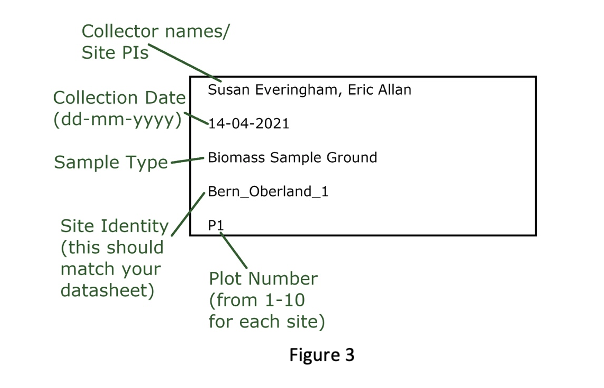Labelling samples and sending them back to the University of Bern
Protocols for labelling and shipping invertebrate/ plants/soil:
Please not that this only applies to the comparative study. Information regarding sending samples from the experimental study can be found here.
Depending on whether you sort your invertebrates before you send them to the project leaders will depend on how you label each vial. Please ensure that labels are either printed in alcohol-proof paper/ink or written in lead pencil as pen ink and some printer inks will rub off if any ethanol leaks from the vials.
If you are sorting the invertebrates, please label the vial as follows:

If you are not sorting the invertebrates and just sending all vials back with a mixture of inverts please remove any plant material such as leaves, sticks etc and then label the vial as follows:

Once the vials are labelled and sealed, place them in a second airtight container (for example a ziplock bag) which is also labelled with the same requirements as the vial labels above (Fig. 1,2).
- Labelling biomass samples to send back to BugNet project leaders
There are two biomass samples per plot at each site for the BugNet comparative study. Once they are dried and preferable ground a subsample of homgenised biomass (around 50mL in volume) should be send in labelled and sealed containers/vials and sent to BugNet. Label the biomass samples as follows:

Once the vials are labelled and sealed, place them in a second airtight container (for example a ziplock bag) which is also labelled with the same requirements as the vial labels above (Fig. 3).
- Labelling soil samples to send back to BugNet project leaders
After taking two soil core samples in each of the ten plots per site and then homogenising the soil into a single sample per site and sieving through 2mm mesh, please send the soil back to the project leaders in a paper bag at the University of Bern, labelled as follows:

Once the vials are labelled and sealed, place them in two layers of airtight containers (for example two ziplock bags) which is also labelled with the same requirements as the vial labels above (Fig. 4).
